Seconds later the bomb attached to the balloon apparatus exploded among them.
The children were killed instantly.
Mrs. Mitchell, her clothes set on fire, lived for just a few minutes.
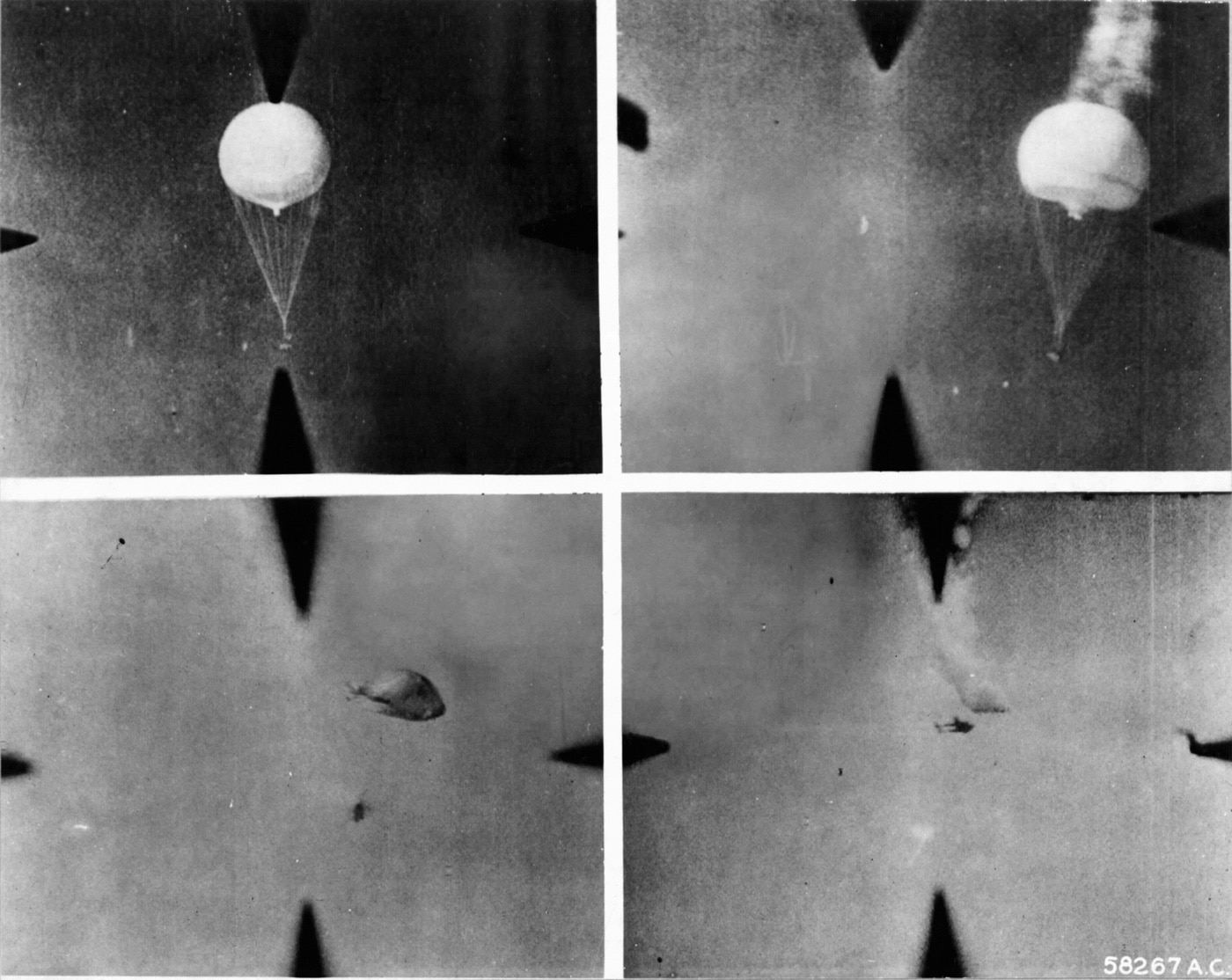
A gun camera’s still frames of a Fu-Go balloon shoot-down by Kiska-basedP-38 Lightning fighters. Image: NARA
Even so, their motivation to strike back was high.
Fu-Go: Balloon Bombs
The Japanese made the balloons from mulberry paper and filled them with hydrogen.
Called Fu-Go, they measured 33 feet in diameter and could carry a payload of four 11-lb.
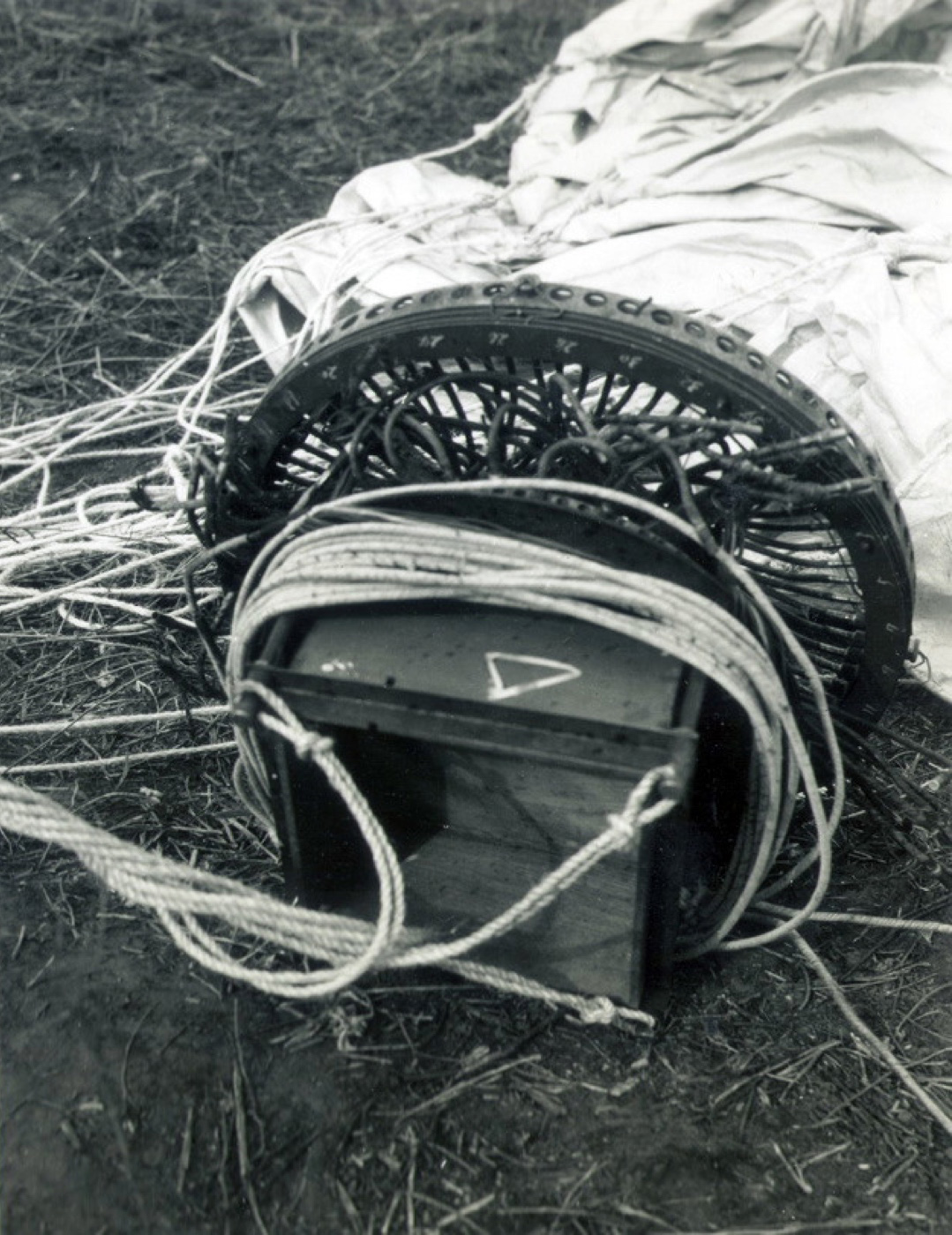
A Fu-Go balloon’s altitude control device and basket are clearly visible in this photo of this recovered balloon bomb. Image: NARA
incendiary bombs, along with a 33-lb.
Some Fu-Go carried a single 26-lb.
Once over the target of the Continental USA, the balloon would finally come down to ultimately blow up.
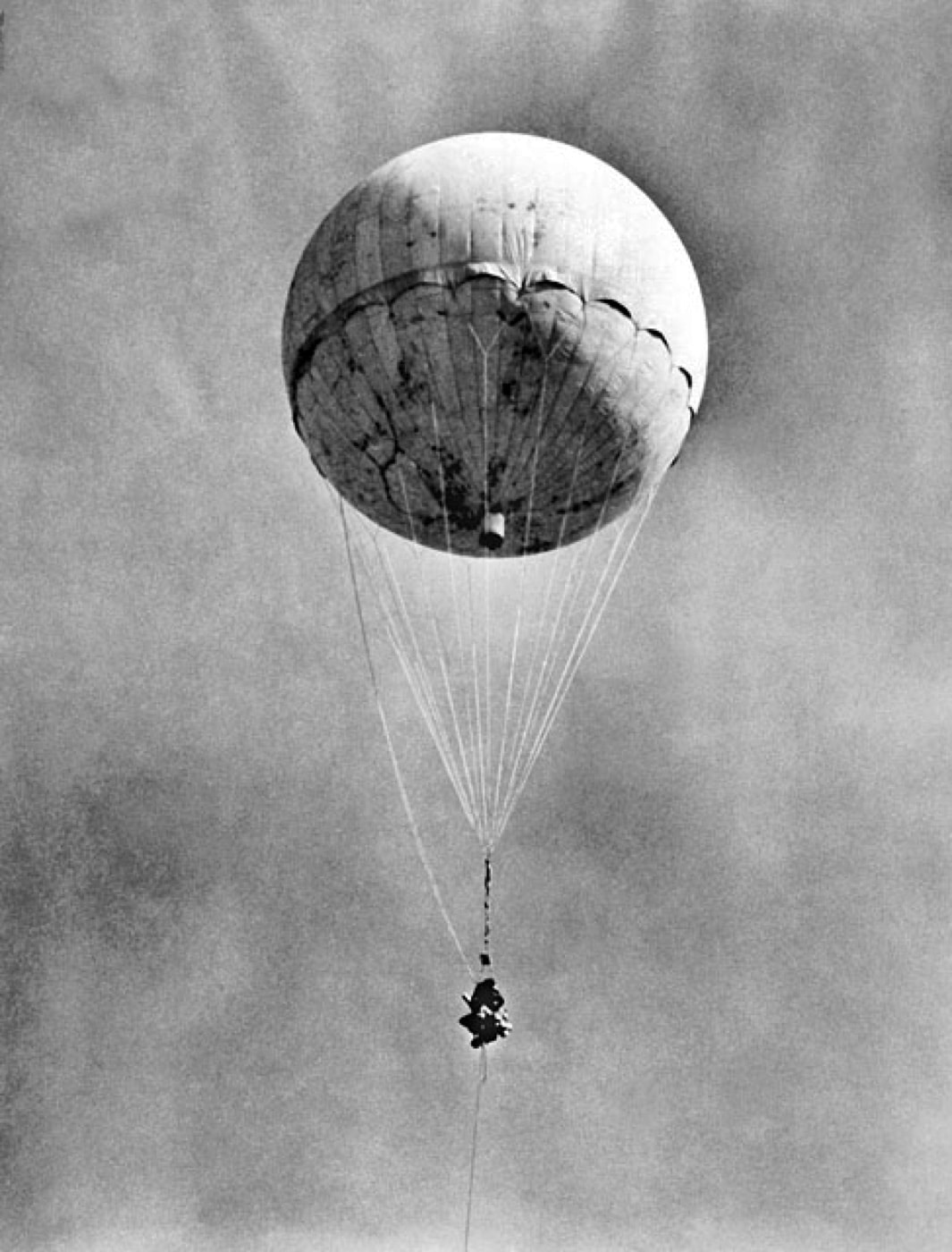
This Fu-Go balloon bomb was reconstructed by the United States from a crashed Japanese balloon found in California by the U.S. military. Image: U.S.A.F.
A few balloons in each group carried radio tracking equipment to estimate their progress toward North America.
Japanese planners estimated that only 10 percent of the balloons would reach the United States.
Several Fu-Go came down as far to the east as Michigan.
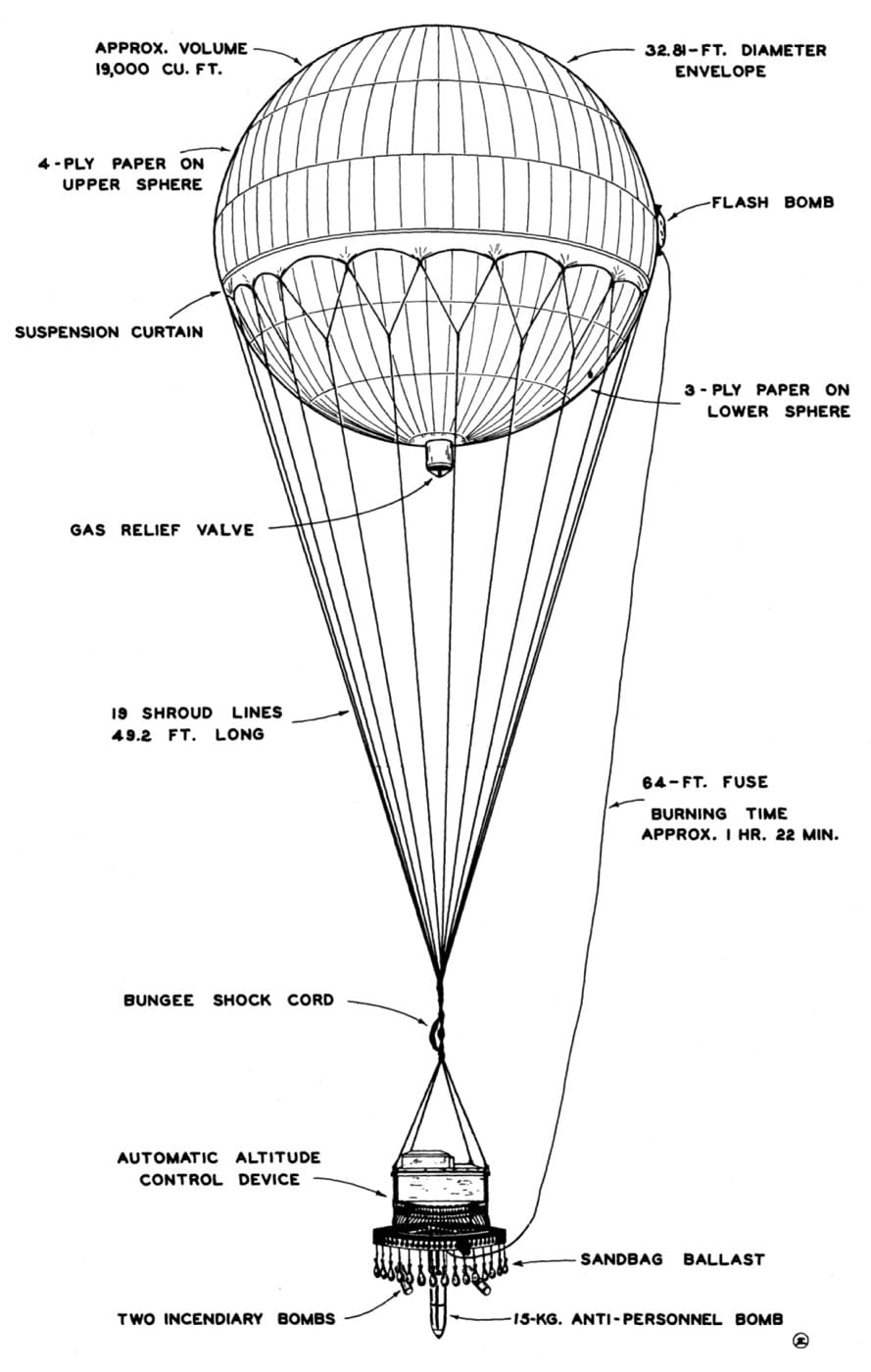
This is a diagram of the Japanese balloon bomb, the first intercontinental weapon system. Image: Author’s collection
Aleutian-based fighters intercepted a number of the balloons and made photographic passes before shooting them down.
About 33 feet in diameter, the balloons were filled with 19,000 cubic feet of hydrogen gas.
Ballast dropping mechanisms and bomb loads were hung about 45 feet below the bag.
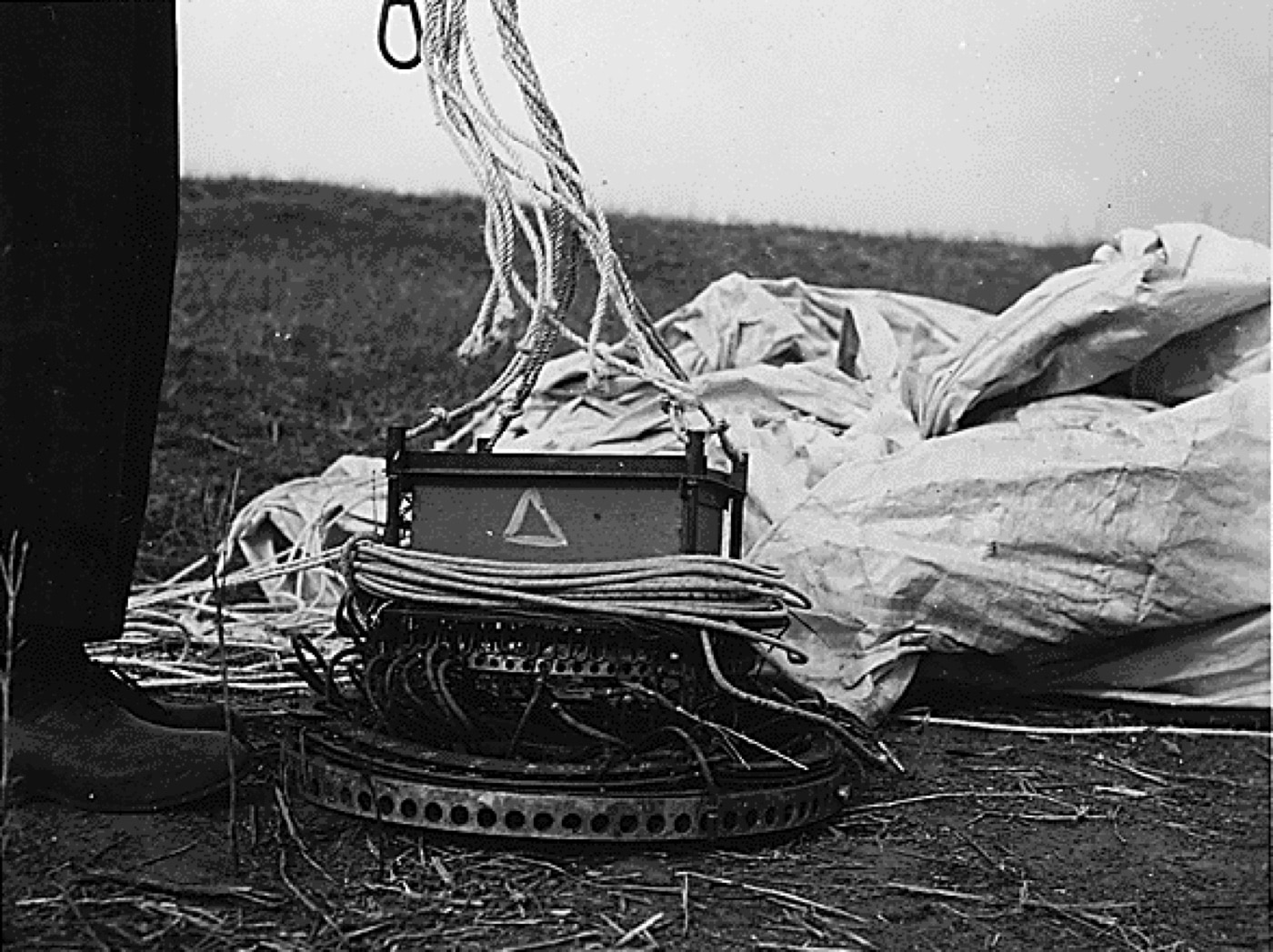
From recovered balloon weapons, the American military was able to determine details on the balloon’s operation. Image: NARA
When hit with incendiaries, the balloons burned but did not explode.
The spherical bag was made of five-ply rice paper, which was shellacked for weatherproofing.
Construction indicated the balloons were being mass-produced at little cost.
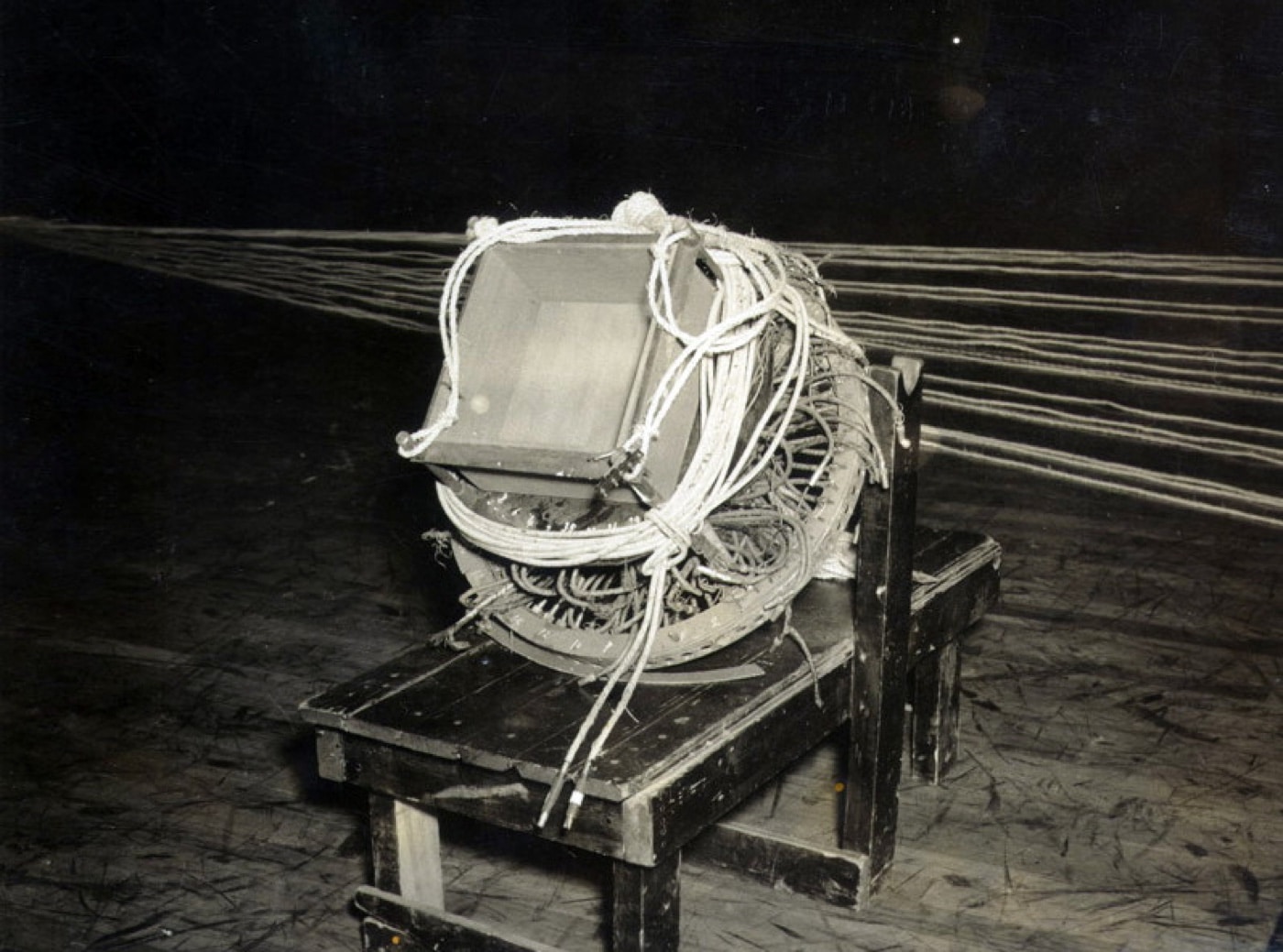
This is the altitude control device from a Fu-Go balloon bomb recovered in the United States. Image: NARA
An escape valve automatically released gas if the balloon rose too high.
A wet cell battery was carried to power the operations of the control apparatus.
Ballast weights were held by simple hooks.
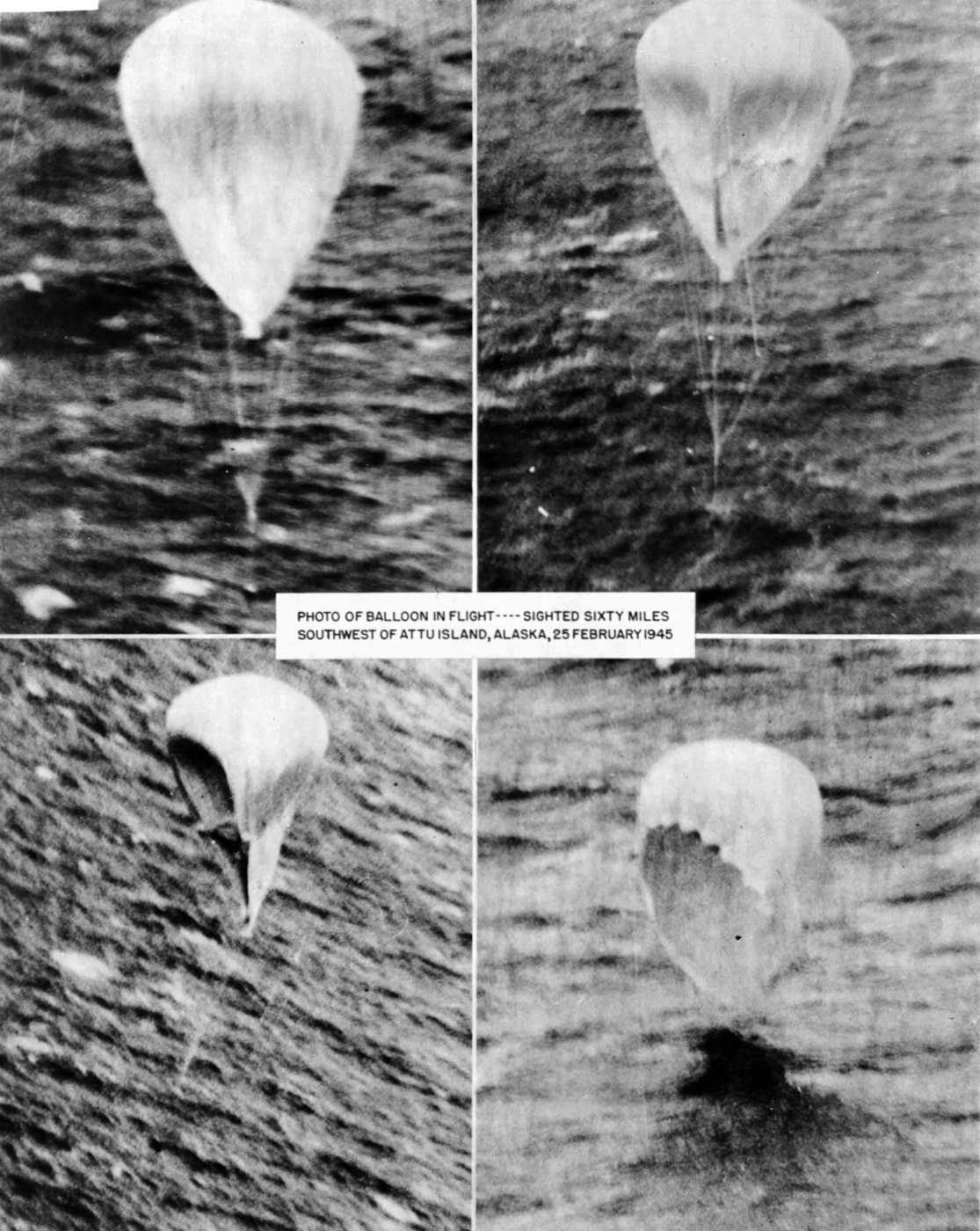
Above are a series of gun camera frames of a Fu-Go balloon crashing into the sea near Attu Island on February 25, 1945. Image: NARA
A series of barometric aneroid switches governed height.
National and state agencies were alerted, and forest rangers began to actively search for evidence of balloons.
This censorship proved effective, and few Americans even today have even heard of the balloon bombs.
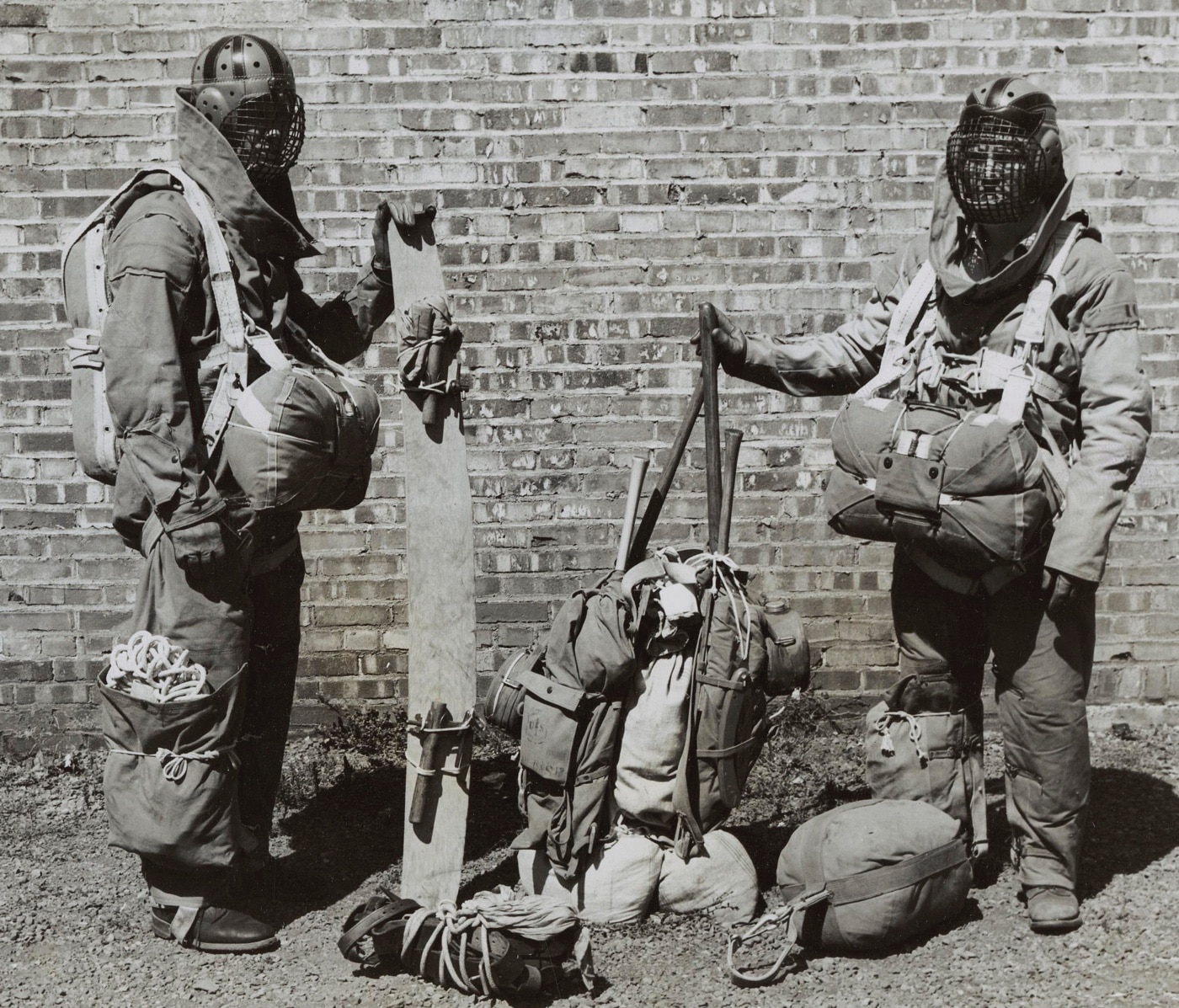
Two smoke jumpers show off their specialized equipment in 1945. Note the modified football helmets made by Riddell. Image: NARA
There they trained for their dangerous new mission parachuting into remote areas of the northwest to fight fires.
During this time, the term Smokejumpers was created and often used to describe the airborne firefighters.
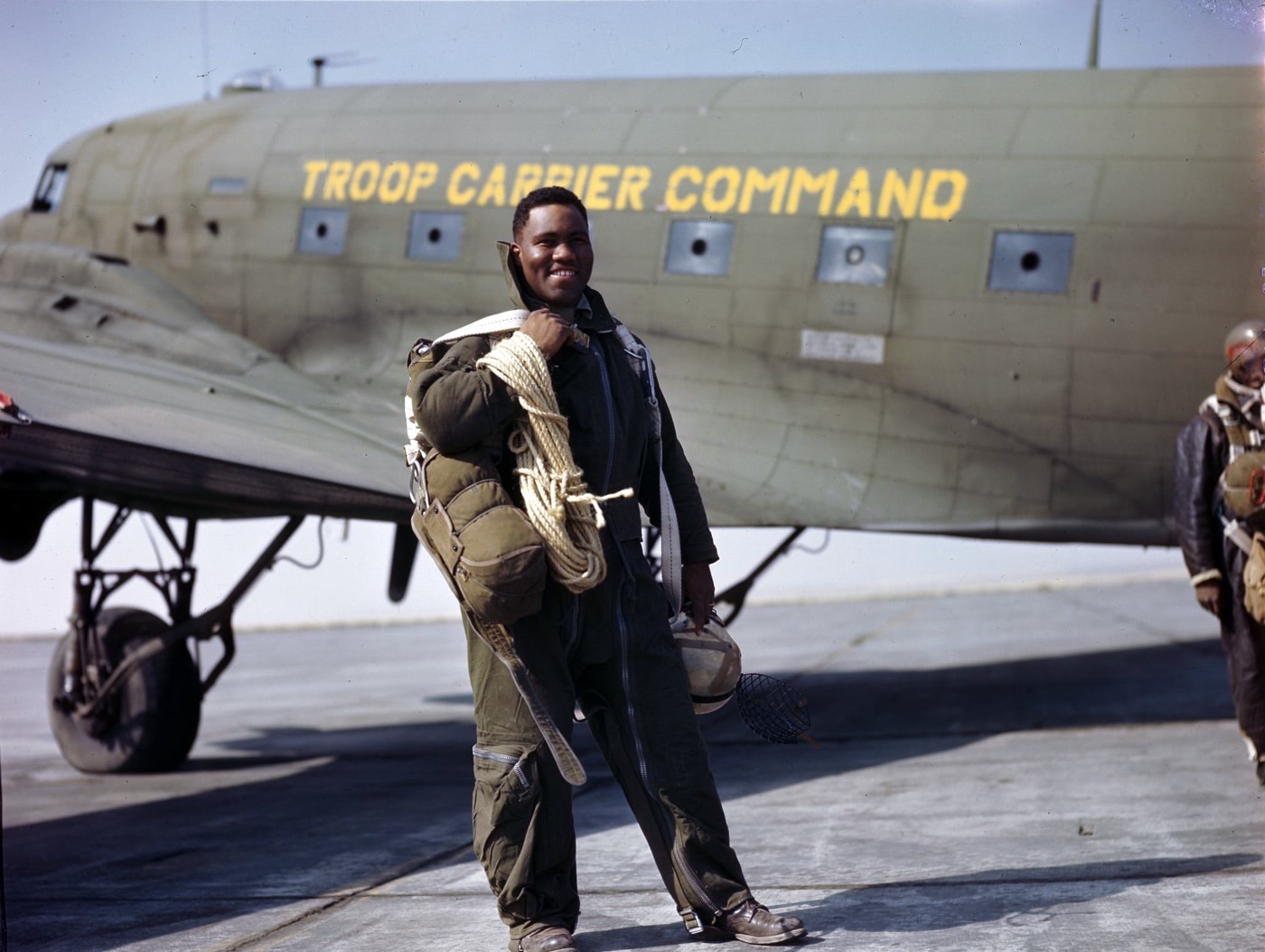
America’s Response: A “smokejumper” of the 555th Parachute Infantry Battalion (the Triple Nickels). Image: NARA
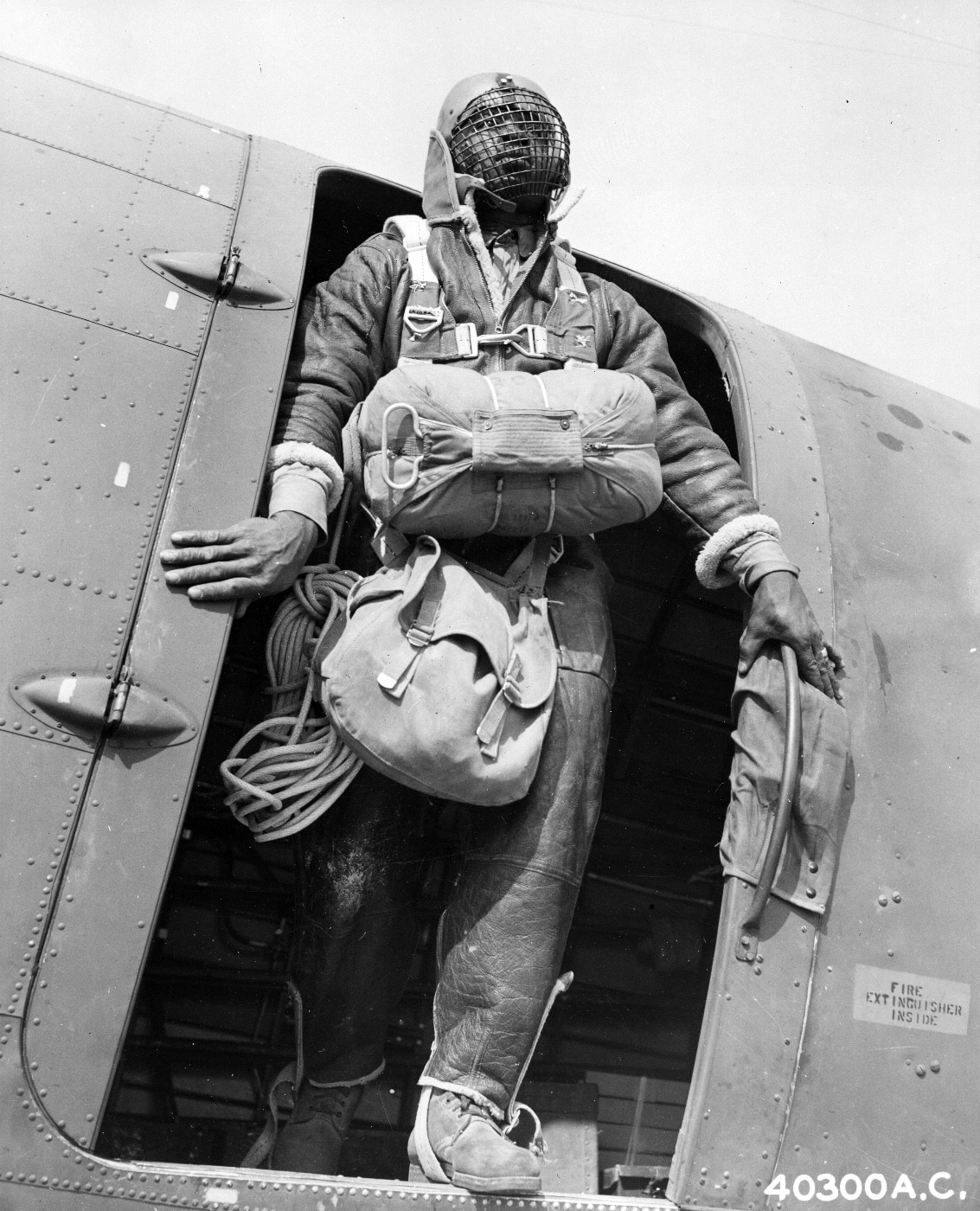
A parachute firefighter of the 555th Parachute Infantry Battalion stands in the door during the summer of 1945. Image: NARA




